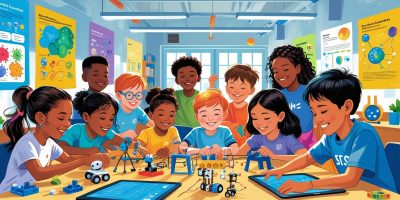STEM learning doesn’t always have to look like building robots or solving math equations. In fact, kids are developing STEM skills all the time — often without even knowing it! The key for parents and educators is to recognize these moments and make the most of them. Here are 7 everyday activities that secretly teach STEM (Science, Technology, Engineering, and Math) skills — right in your living room, kitchen, or backyard.
1. Cooking and Baking = Chemistry + Math
Measuring ingredients teaches kids about volume, ratios, and fractions. Watching how ingredients change when heated introduces them to basic chemistry concepts like states of matter and reactions. Even adjusting a recipe’s quantity involves multiplication or division — all wrapped in a delicious activity!
2. Building Forts = Engineering in Action
When kids grab cushions, blankets, and chairs to build a fort, they’re intuitively exploring structural design, weight distribution, and spatial reasoning. Encourage them to experiment with different shapes or materials to see what holds up best — just like real engineers.
3. Nature Walks = Environmental Science and Observation
A simple walk outside can become a biology and earth science lesson. Encourage your child to observe patterns in leaves, notice how ants work, or identify clouds. Take it further by journaling their findings, introducing the concept of data collection.
4. Playing with Blocks or LEGOs = Spatial Math & Engineering
Classic block play or LEGO building improves spatial awareness, geometry, symmetry, and logical thinking. Ask them to recreate a structure from memory, follow a blueprint, or invent something new — you’re reinforcing essential STEM skills through play.
5. Grocery Shopping = Real-World Math
Let your child help compare prices, calculate discounts, or weigh produce. This encourages estimation, budgeting, and critical thinking — foundational math concepts they’ll use for life.
6. Gardening = Life Science and Experimentation
Planting seeds and watching them grow is a hands-on lesson in biology. Kids learn about plant cycles, sunlight, soil, and water — and they can even design mini experiments like testing which seed grows faster under different conditions.
7. Fixing Things Together = Physics and Problem Solving
Next time something needs a small fix — a squeaky door, a loose screw — get your child involved. They’ll learn about tools, mechanical systems, and trial-and-error thinking. These problem-solving skills are core to both engineering and everyday life.
Conclusion
You don’t need fancy kits or coding apps to start building your child’s STEM foundation. With a little creativity and mindfulness, everyday moments can become powerful STEM lessons. Encourage curiosity, ask questions, and make space for trial and error — because that’s where real learning lives.





